Introduction: The Enduring Beauty of Seattle’s Evergreen Trees
After a rainfall, few experiences rival the earthy, resinous scent of Seattle evergreen trees. The air surrounding the area becomes clean and thick, cradled by the green foliage of tall conifer trees.
The entire Pacific Northwest region has these evergreen trees adding to its beauty. There are three species, including (Douglas Fir), (Western Red Cedar) and (Western Hemlock) mostly found in this region of Seattle. Their green foliage remains throughout the year highlighting its natural beauty.
This guide presents suitable evergreen conifer species for Seattle climates, and provides essential care techniques on how to maintain and create your personal evergreen sanctuary.
What Makes a Tree a Conifer? & The Main Characteristics of Conifers
Conifers are a group of plants that include both shrubs and trees, defined by their reproductive cones, which categorize them biologically.
These trees fulfill the definition of conifer “cone-bearing” in Latin as the conifer characteristic include needle-like or scale-like leaves that minimize water loss.
Key characteristics include:
- Conifers maintain needle-shaped or scaly leaves for water conservation, helping which them throughout wet winter conditions as well as occasional summer droughts.
- Unlike flowering trees, conifers protect their seeds within cones.
- Most coniferous trees retain their leaves all year-round, maintaining an evergreen tree identification, although some species known as larches shed their needles each season.
The adaptations of conifers allow them to thrive in the diverse Pacific Northwest conditions effectively.
Benefits of Evergreen Trees in Seattle Landscapes
Seattle Evergreen trees offer a multitude of practical and ecological benefits for homeowners:
Privacy screening: The dense urban area of Capitol Hill and Queen Anne benefit from privacy protection through tall Thuja occidentalis (American Arborvitae) hedges, which provide continuous screening throughout the year.
Wildlife Habitat: Native birds, including chickadees, nuthatches, and owls, find essential shelter beneath the Douglas Firs and other evergreen species.
Environmental services: Evergreen trees provide Seattle with two essential environmental functions, they trap carbon emissions and purify the city’s air, according to U.S. Forest Service (2022).
Storm water Management: Their extensive root systems reduce soil erosion and help manage Seattle’s heavy winter rains.
Aesthetic Appeal: In a season when most gardens turn brown or barren, evergreens provide essential winter interest, structure, and beauty.
Small Evergreen Trees for Seattle: Perfect for Urban Yards
For compact urban lots common in neighborhoods like Ballard or Wallingford, smaller evergreens offer beauty without overwhelming limited spaces.
The following evergreen trees stand excellent as decorative options since they reach a maximum height under 25 feet:
- Boulevard False Cypress (Chamaecyparis pisifera ‘Boulevard’): 10–20 ft tall, excellent for narrow spaces.
- Mugo Pine (Pinus Mugo): Compact evergreens in Seattle consist of Pinus Mugo. These are adaptable species suitable for raised beds and container planting.
- Irish Yew (Taxus baccata ‘Fastigiata’): Dense, upright form ideal for tight side yards.
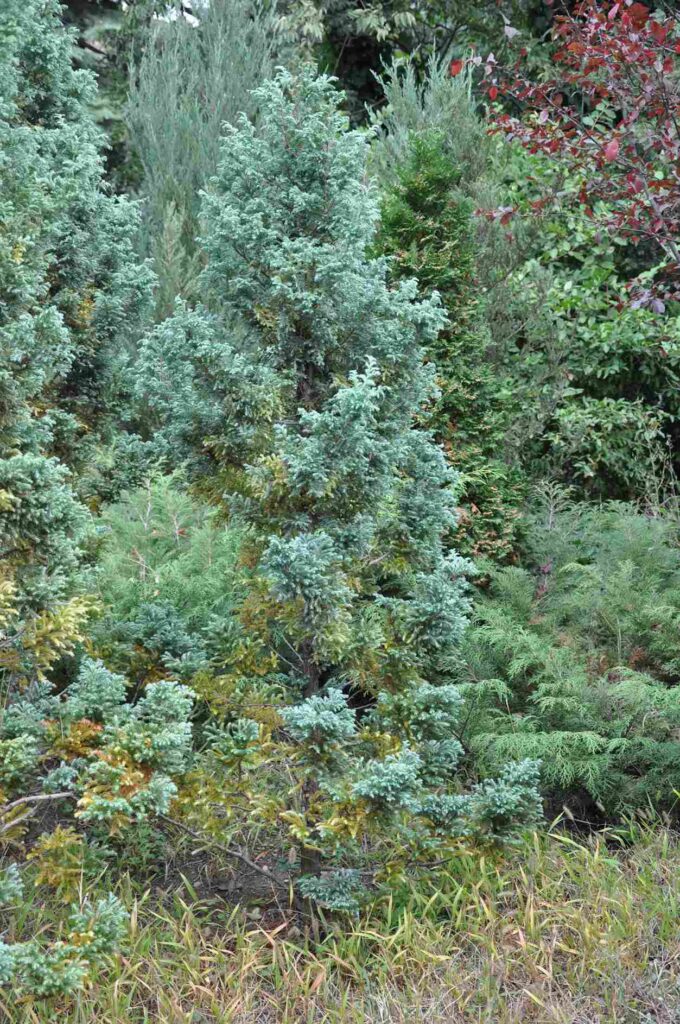
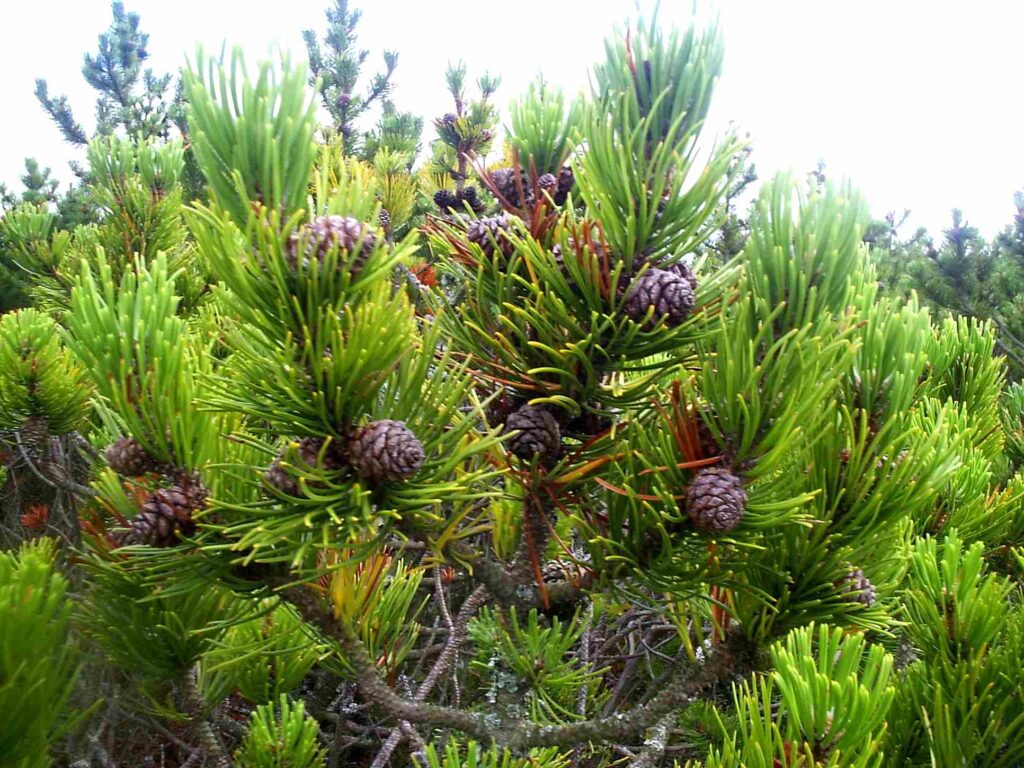
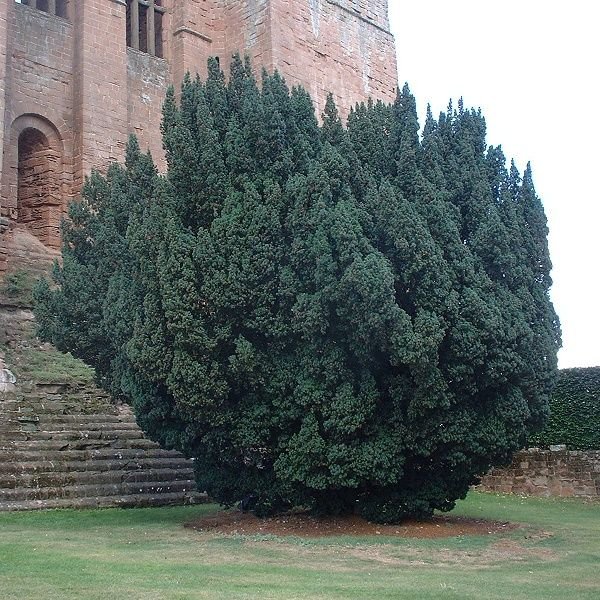
Evergreens require proper spacing from property lines, plants should be placed at least 5–6 feet from boundaries to prevent growth disputes in the future.
Certain varieties thrive in large containers positioned on decks or patios, providing excellent versatility for both renters and residents, with small-sized properties.
Best & Growing Conditions for Evergreen Trees in Seattle
The climate of Seattle consists of both main seasons, the cool, wet winters and mild, dry summers, creating a perfect blend of environment for these conifer species.
One thing to keep in mind is that microclimates often affect the soil types and drainage patterns across the city.
For example:
- Seattle evergreen soil is located in the Northern region, having features like well-drained, sandy and excellent for pines.
- South Seattle has heavier clay soils requiring soil amendments for better root penetration.
Key growing tips:
- Soil: Growing evergreens in Seattle is the best in slightly acidic soil with a pH range of 5.5 to 6.5.
- Light: This is different for each species. As for Western Hemlocks, they thrive in shady conditions whereas the Douglas Firs need sunny environment.
- Spacing: Consider your property size when selecting evergreen species. Compact varieties like Mugo Pine work well for urban lots in neighborhoods like Ballard or Wallingford, while larger species like Douglas Fir need ample space to accommodate their mature spread without overwhelming smaller yards.
Popular Evergreen Conifers for Seattle Properties
The city of Seattle provides several types of evergreen conifers which serve three landscape needs: screening, shade provision and decorative purposes.
- Douglas Fir (Pseudotsuga menziesii): Iconic, fast-growing giant.
- Western Red Cedar (Thuja plicata): Aromatic and culturally significant.
- Western Hemlock (Tsuga heterophylla): Washington’s state tree.
- Scots Pine (Pinus sylvestris): Hardy and drought-tolerant.
- Norway Spruce (Picea abies): Elegant and fast-growing.
These Seattle conifer trees come in various sizes which accommodate either extensive suburban lands or smaller urban gardens.
Douglas Fir: Seattle’s Iconic Evergreen Tree
The residents in Seattle consider the Douglas Fir tree (Pseudotsuga menziesii) as one of the most recognizable evergreen although it belongs to a different taxonomic group and not the true firs. Wild forest conditions allow the tree’s specimens to reach heights of 200 feet although urban growth usually reaches only 80 to 100 feet at max.
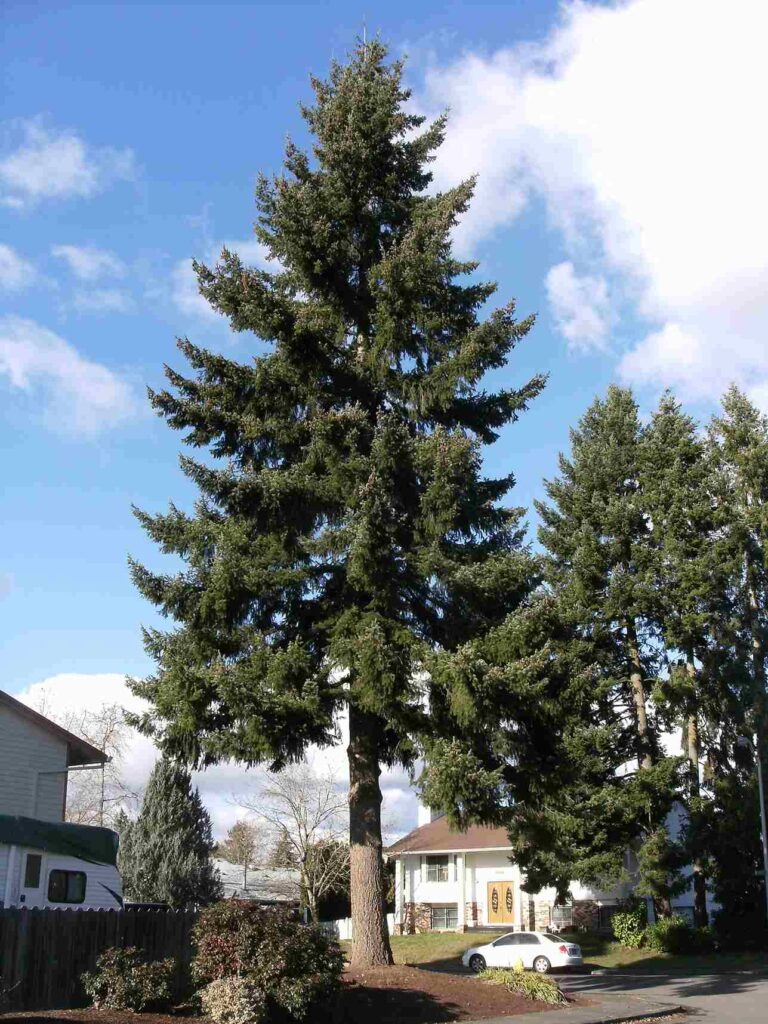
Douglas Fir trees towering in a Seattle setting, demonstrating their impressive height and distinctive thick bark.
Key features of the Douglas Fir in Seattle include:
- Thick, deeply furrowed bark
- Soft, flat needles with a sweet fragrance
- Unique cones with “mouse tail” bracts
In Seattle yards, Douglas Firs need space to thrive, ideally planted away from structures to accommodate their expansive roots.
- Did you know Douglas Firs account for 35% of Washington’s timber volume (U.S. Forest Service, 2022)
Western Red Cedar: A Versatile Seattle Evergreen
The Western Red Cedar (Thuja plicata) has a lot of cultural importance for the people living in Seattle. It is not just admired for the beauty but its scale-like leaves emit a spicy, refreshing fragrance right after it rains.
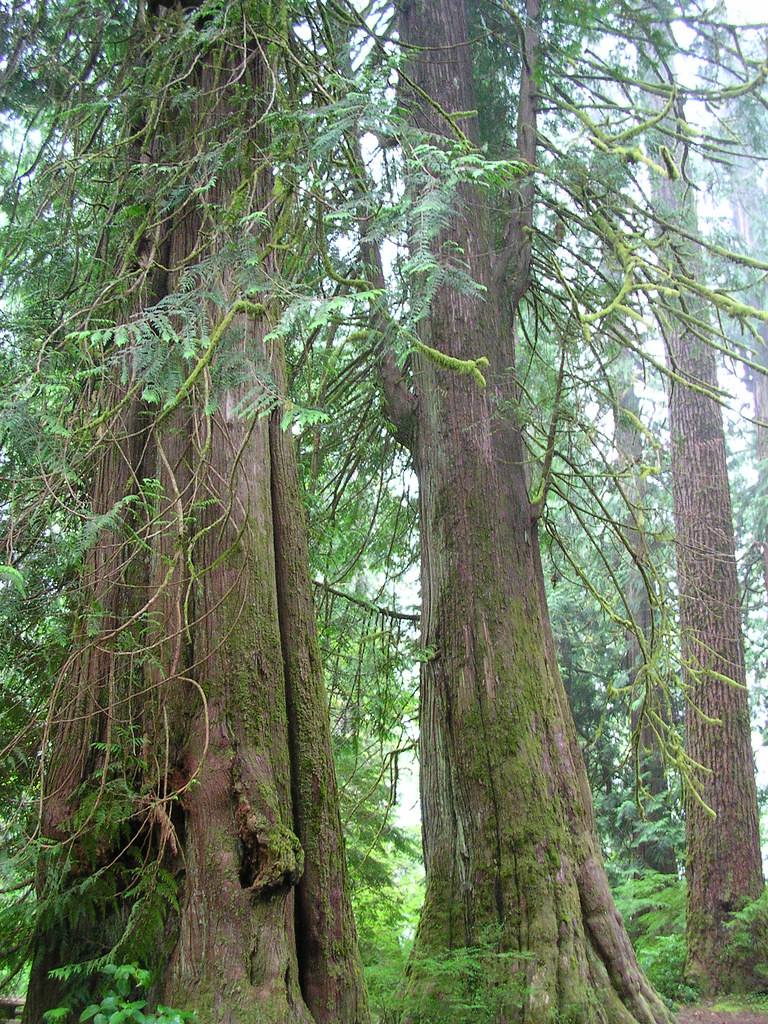
A mature Western Red Cedar providing natural privacy screening in a typical Seattle residential setting.
Landscape benefits offered by western red cedar in Seattle:
- Natural screen and windbreak
- Tolerates wet soils better than most conifers
- Wildlife magnet, offering shelter for small mammals and birds
This tree thrives in Seattle’s wetter neighborhoods and can grow 50–70 feet in cultivated landscapes.
Western Hemlock: Washington’s State Evergreen Tree
The Western Hemlock (Tsuga heterophylla) has a delicate appearance. The drooping feathery branch structure serves as an excellent evergreen for shady gardens in Seattle.
For anyone wanting shade, planting the Western Hemlock would be the best option among the rest.
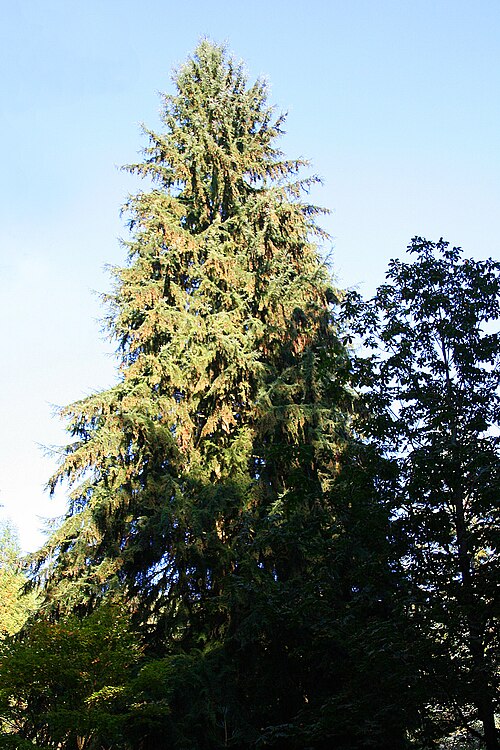
Western Hemlock trees showcasing their distinctive drooping branches and delicate foliage in a Seattle garden setting.
Notable traits of Western Hemlock in Seattle:
- Prefers part-shade to full shade
- Tolerates moist soils
- Grows 70–100 feet tall in open landscapes
As Washington’s state tree, the Western Hemlock symbolizes resilience, A must for any Pacific Northwest garden.
Pine Trees for Seattle: Evergreen Options for Every Yard
A Seattle garden would look incomplete without pine trees, which contribute their distinctive slender forms, elongated needles, and ornamental cones.
Best options for Pine Trees Seattle include: Pinus strobus (Eastern White Pine) with soft, elegant needles and Pinus ponderosa (Ponderosa Pine) with rugged, drought-resistant needles.
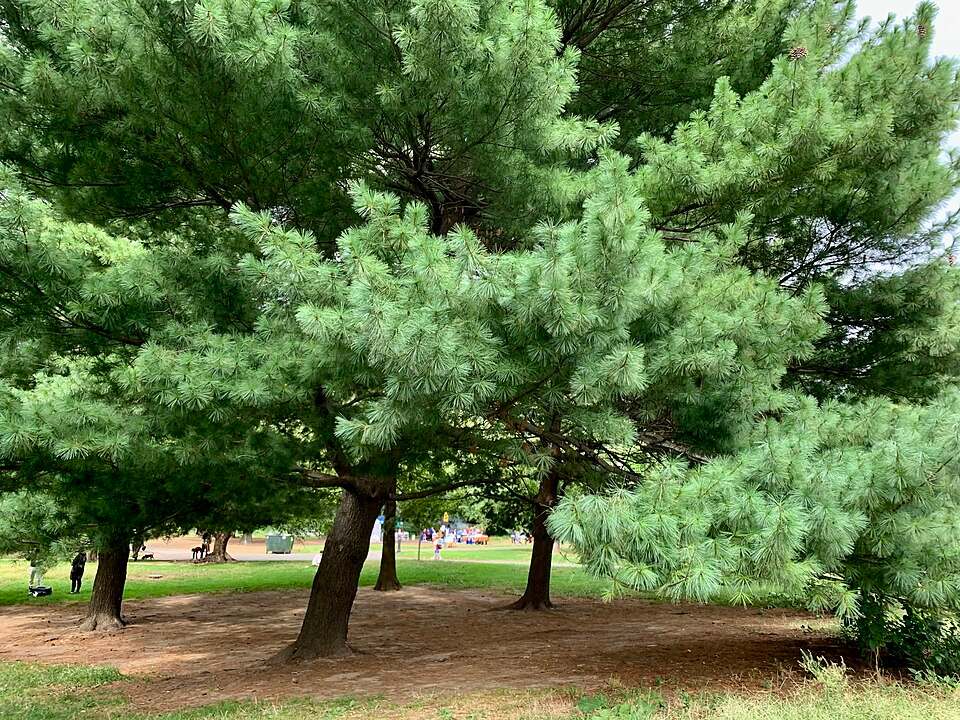
Pine trees flourishing in a Seattle garden, displaying their characteristic evergreen foliage and adaptability to the Pacific Northwest climate.
Pines thrive in sunny conditions while require well drained soils. The open, airy structures bring visual appeal by standing out against the denser foliage of cedars and firs.
Spruce Trees: Elegant Evergreens for Seattle Gardens
Spruce trees can be well integrated with natural areas because their pointed fixed needles create a geometric silhouette.
Ideal species of Spruce Trees in Seattle:
- The Colorado Blue Spruce variety of Picea pungens ‘Glauca’ reveals its black-glauca leaves showing exceptional silver-blue needle coloration.
- Picea abies also known as the Norway Spruce is fast growing and adaptable.
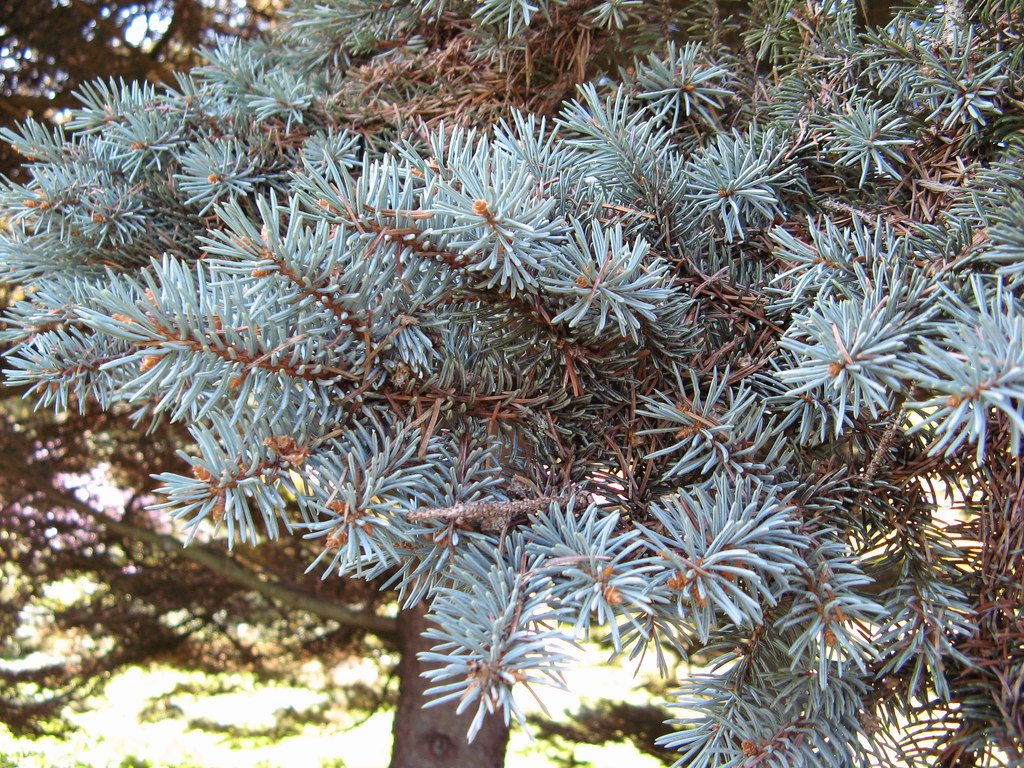
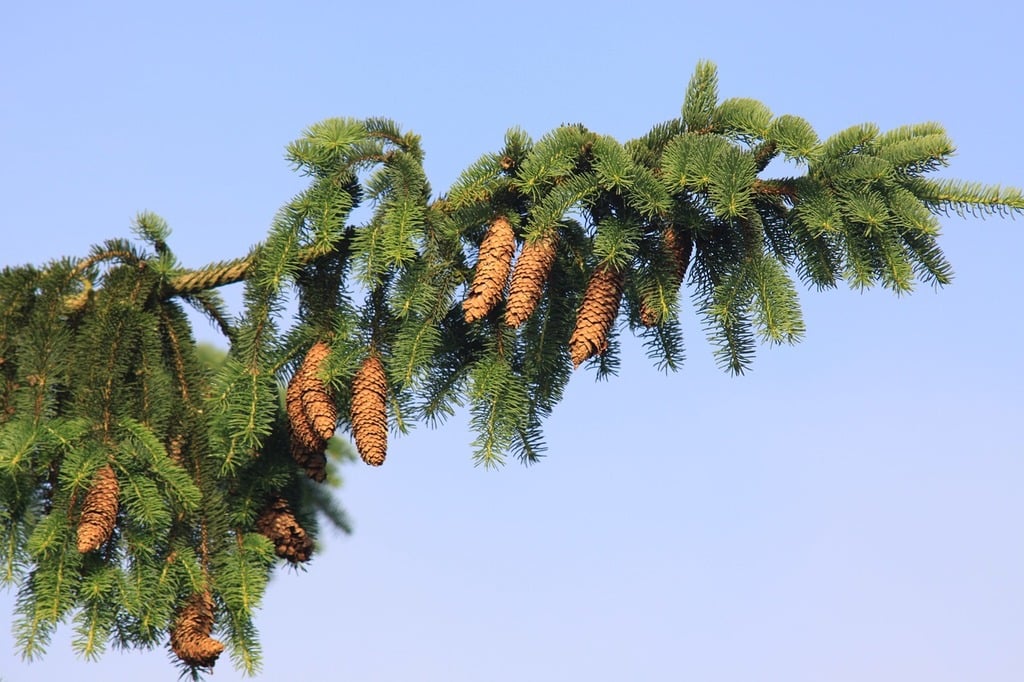
During droughts, spruce trees thrive best with sufficient airflow combined with a balanced water supply.
Common Challenges When Growing Evergreen Trees in Seattle
While the trees thrive here, gardeners face the following Seattle evergreen issues:
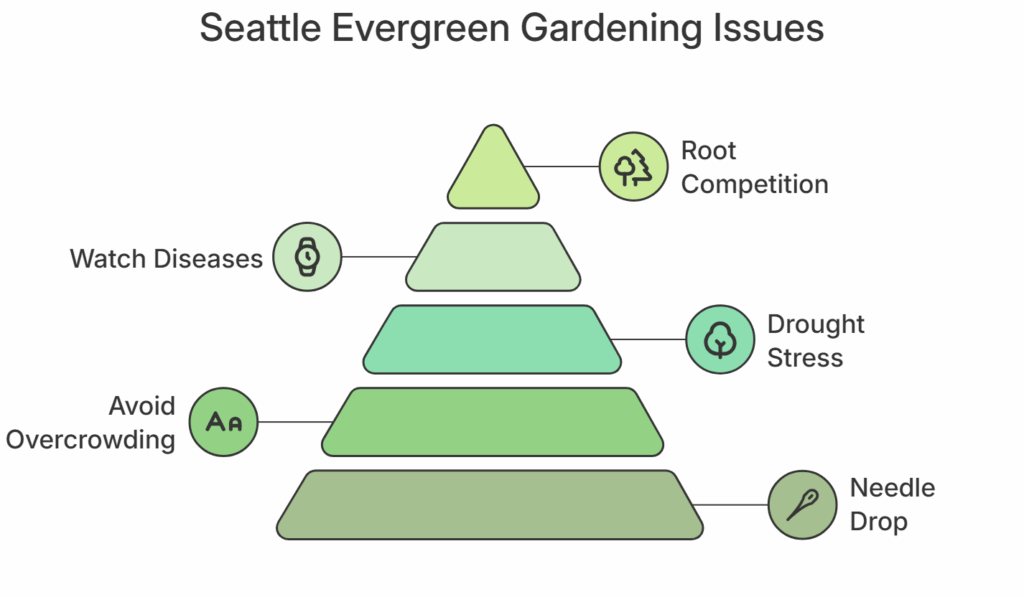
- Root Competition: Avoid planting too close to hardscapes to prevent lifting.
- Diseases: Watch for cedar root rot and Swiss needle cast, which are common fungal infections affecting evergreen trees in Seattle’s humid climate. These diseases can cause serious damage including needle browning, branch dieback, and root decay if not addressed promptly. Proper evergreen tree diseases treatment involves early diagnosis and professional intervention to prevent tree loss.
- Drought Stress: Mulch generously and deep-water during dry summer months.
- Overcrowding: The planting should be done in mature sizes, keeping in mind that you don’t want to overcrowd your lot.
- Needle Drop: Even though there would be seasonal shedding, if you notice excessive yellowing, it may indicate stress.
Frequently Asked Questions About Evergreen Trees
Q: Are evergreen trees coniferous?
A: Most evergreen trees are conifers, but not all. Some broadleaf evergreens like holly exist too.
Q: What is the difference between a coniferous evergreen and a deciduous tree?
A: The main distinction between a coniferous evergreen tree and a deciduous tree is that the coniferous evergreen group maintains steady foliage throughout the year but deciduous trees regularly shed their leaves.
Q: Why are most coniferous trees evergreen?
A: The harsh winter climate triggers an efficient adaptation: moisture-retaining needles, which help the trees prevent annual leaf growth.
Conclusion: Creating Your Seattle Evergreen Sanctuary
In conclusion you can establish your own Seattle Evergreen Landscape based on certain key factors. Evergreen trees in Seattle define the atmosphere by offering year-round beauty, environmental advantages and privacy screening. By selecting the right species alongside proper maintenance, you can build a long-lasting living sanctuary for decades.
For additional information and personalized guidance, you can explore extended articles about Seattle’s native and common trees.







